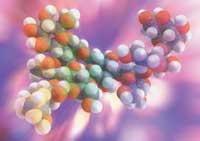Seeking to unite smell and structure

Many scientists try to find the relationship between these two odour characteristics and try, but they have not yet managed to develop models that do not generate contrary opinions. The last trial was conducted by neuroscientists at the Wiezmann Institute of Science in Israel. They have stated that a model is being developed to predict the sensation of pleasure by knowing the chemical structure of the odorous molecules.
In their study they took 1,656 aromatic molecules and described 1,514 characteristics of their physical structure (number of atoms of molecules, number of functional groups, molecular weight and types of bonds among others). The 1,514 values of each molecule were introduced in a single number using a statistical technique, and were subsequently given sorted on a line.
When analyzing the order reached, it seems that, starting from one end, as they advanced in the line, the odors of the molecules were increasingly pleasant (or more unpleasant, where they started), that is, by a classification based on the structure, they were ordered according to the sensation of causing the odors.

In general, they claim that the consistency of odorous molecules is what has to do with the pleasure they produce: the heavier and more compact they are, the better smell, and the lighter and serene they are, the worse it is.
Contrary opinions? Yes, of course
As we have said, no one has yet found forms or models that do not generate contrary opinions to predict the smell of molecules. He also collected the aforementioned studies. On the one hand, there is more than one who believes that it cannot be said if the sensation generated by the molecules is pleasant or not, because there are no smells that each and every one of the people of the world find pleasant. They say we learn to have some sense of culture or experience.

On the other hand, eleven examples have been given to demonstrate that the consistency of molecules is not necessarily associated with their smell. In the case of the limonene molecule, for example, it is clearly seen. There are two "versions" of this molecule, exactly the same in terms of composition and consistency, but when oriented in space, one has a mirror shape, as our hands are a mirror of the other. A version of limonene smells like orange and a lemon. These molecules are used to make soft drinks of lemon and orange.
In addition, sometimes the concentration of the odorous molecule limits the pleasantness or unpleasant smell. For example, indola, at high concentrations, has a rotten smell and low concentrations, a flower. In many aromas it is an important component.
Faced with these opposing views, the Israeli group has said they have to work hard to improve their model. However, they have not yielded to the idea behind their research. According to them, the sense of pleasure that makes us feel every smell is not subjective. They say that it produces a certain property of the odorous molecules, and we have specialized in recognizing it. And they look for that supposed property.
Published in 7K.
Buletina
Bidali zure helbide elektronikoa eta jaso asteroko buletina zure sarrera-ontzian











